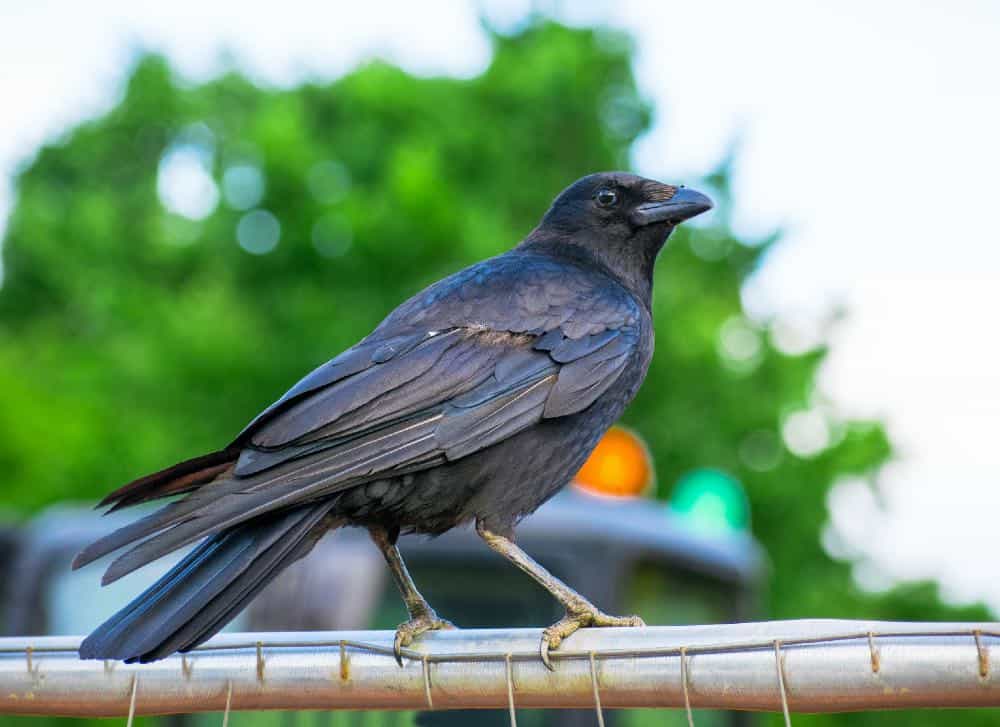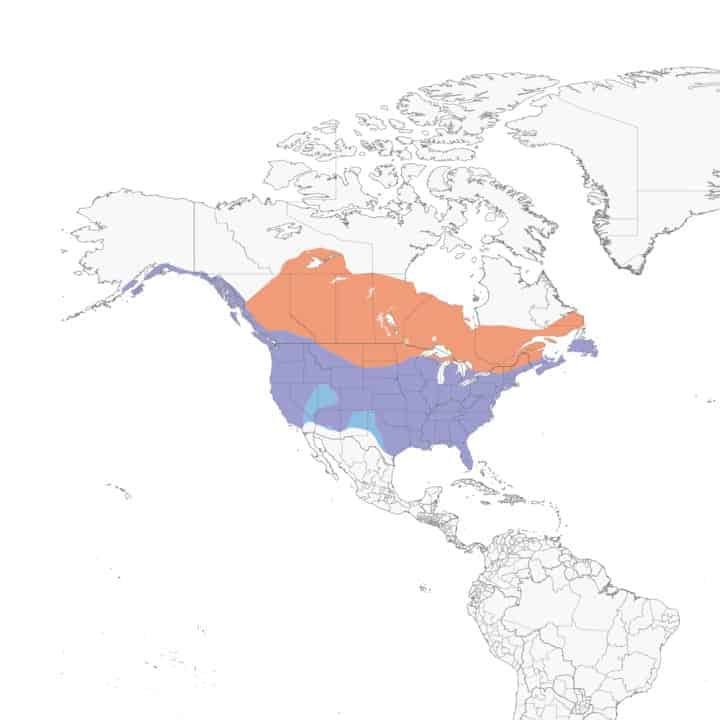
Appearance: Large all-black bird about 16-20″ long, wide neck with a long straight bill. Males and females have the same appearance.
Diet: Opportunistic scavengers eat just about anything they can find on the ground – especially garbage. Natural living fare includes insects, spiders, frogs, snakes, and other birds’ eggs & young.
Feeder food: Not likely to visit a feeder.
Habitat: American crows are common birds found in every contiguous US state and most of Canada. Types of habitat include fields, open wooded and forested areas, river edges, shores, towns, cities, parks, and more. The only place you won’t find them is in the hot desert.
Nesting:
- Nest: Builds nests in a large shrub or tree as high as 20′
- Broods: 1-2 broods/season
- Clutch: 3-9 eggs per brood
- Egg color: Ranging from brighter blue-green to a dull green or blue-gray with heavy gray and brown blotching
- Egg size: 1.4 – 1.9 inches by 1 inch
- Incubation: Both parents incubate the eggs for about 18 days.
Migration: American crows are migrators.
Year-round range: The American crow’s year-round range includes every US state except North Dakota and the pacific coast of Canada’s British Columbia.
Breeding range: While some northern flickers remain in their year-round range to breed, many others migrate north into Canada to raise their young – but only for a season.
Winter range: American crows migrate south back to their year-round range for winter while some move further south to Nevada, Utah, New Mexico, and western Texas.
Range Map


